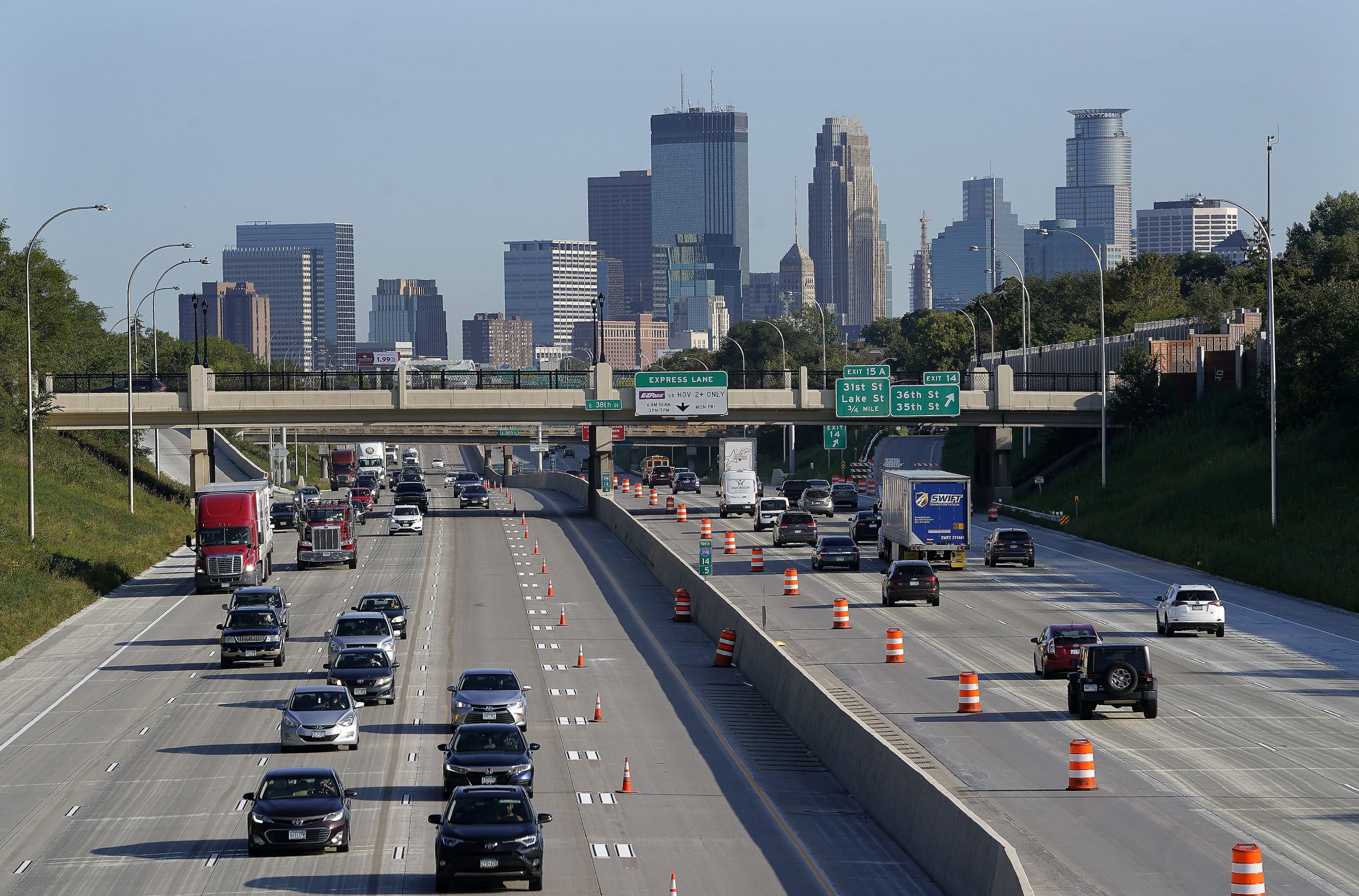In this article, we shall be talking about various road systems within the city of Minneapolis, Minnesota, as well as extra information on other forms of transportation within the city. Now, without further ado, let us begin.
Half of Minneapolis–Saint Paul residents work in the city where they live. Most residents drive cars, but 60% of the 160,000 people working downtown commute by means other than a single person per auto. The Metropolitan Council’s Metro Transit, which operates the light rail system and most of the city’s buses, provides free travel vouchers through the Guaranteed Ride Home program to allay fears that commuters might otherwise be occasionally stranded if, for example, they work late hours.
On January 1, 2011, the city’s limit of 343 taxis was lifted.
Minneapolis currently has two light rail lines and one commuter rail line. The METRO Blue Line LRT (formerly the Hiawatha Line) serves 34,000 riders daily and connects the Minneapolis–Saint Paul International Airport and Mall of America in Bloomington to downtown. Most of the line runs at surface level, although parts of the line run on elevated tracks (including the Franklin Avenue and Lake Street/Midtown stations) and approximately 2 miles (3.2 km) of the line runs underground, including the Lindbergh terminal subway station at the airport.
Minneapolis’s second light rail line, the METRO Green Line shares stations with the Blue Line in downtown Minneapolis, and then at the Downtown East station, travels east through the University of Minnesota, and then along University Avenue into downtown Saint Paul. Construction began in November 2010 and the line began service on June 14, 2014. The third line, the Southwest Line (Green Line extension), will connect downtown Minneapolis with the southwestern suburb of Eden Prairie. Completion is expected sometime in 2022. A northwest LRT is planned along Bottineau Boulevard (Blue Line extension) from downtown to Brooklyn Park. Metro Transit recorded 81.9 million boardings in 2017, slightly down from 82.6 million in 2016. The Blue Line carried 10.7 million riders in 2017, breaking its previous record annual ridership total. About 13.1 million people rode the Green Line in 2017, up 3.5% from 2016. However, these increases in light rail ridership were offset by a lower number of bus boardings: 55.7 million in 2017, compared to about 58.5 boardings in 2016.
The 40-mile NorthStar Commuter rail, which runs from Big Lake through the northern suburbs and terminates at the multi-modal transit station at Target Field, opened on November 16, 2009. It uses existing railroad tracks and serves 2,600 daily commuters. Annual ridership on the line increased to over 787,000 in 2017, up 12% from the previous year.
According to the 2016 American Community Survey, 59.9% of the working city of Minneapolis residents commuted by driving alone, 7.6% carpooled, 14.2% used public transportation, and 7.3% walked. About 5.1% used all other forms of transportation, including taxicab, motorcycle, and bicycle. About 5.9% of the working city of Minneapolis residents worked at home. In 2015, 18.2% of the city of Minneapolis households were without a car, which decreased to 17.1% in 2016. The national average was 8.7 percent in 2016. Minneapolis averaged 1.35 cars per household in 2016, compared to a national average of 1.8 per household.
Minneapolis ranked 27th in the nation for the highest percentage of commuters by bicycle in 2011 and was editorialized as the top bicycling city in “Bicycling’s Top 50” ranking in 2010. Ten thousand cyclists use the bike lanes in the city each day, and many people ride in the winter. The Public Works Department expanded the bicycle trail system from the Grand Rounds to 56 mi (90 km) of off-street commuter trails including the Midtown Greenway, the Light Rail Trail, Kenilworth Trail, Cedar Lake Trail and the West River Parkway Trail along the Mississippi. Minneapolis also has 40 miles (64 km) of dedicated bike lanes on city streets and encourages cycling by equipping transit buses with bike racks and by providing online bicycle maps. Many of these trails and bridges, such as the Stone Arch Bridge, were former railroad lines that have now been converted for bicycles and pedestrians. In 2007 citing the city’s bicycle lanes, buses, and LRT, Forbes identified Minneapolis the world’s fifth cleanest city. In 2010, Nice Ride Minnesota launched with 65 kiosks for bicycle sharing, and 19 pedicabs were operating downtown. In 2016, Nice Ride expanded to 171 stations and 1,833 bikes supplied by PBSC Urban Solutions, a Canadian company.
A 2011 study by Walk Score ranked Minneapolis the ninth most walkable of 50 largest cities in the United States.
The Minneapolis Skyway System, seven miles (11 km) of enclosed pedestrian bridges called skyways, link eighty city blocks downtown. Second-floor restaurants and retailers connected to these passageways are open on weekdays.
Minneapolis–Saint Paul International Airport (MSP) sits on 3,400 acres (1,400 ha) on the southeast border of the city between Minnesota State Highway 5, Interstate 494, Minnesota State Highway 77, and Minnesota State Highway 62. The airport serves international, domestic, charter and regional carriers and is a hub and home base for Sun Country Airlines and Compass Airlines. It is also the second-largest hub for Delta Air Lines, who fly more flights and passengers out of MSP than any other airline. For terminals serving 25 to 40 million passengers, MSP was named the Best Airport in North America in 2016 and 2017.


